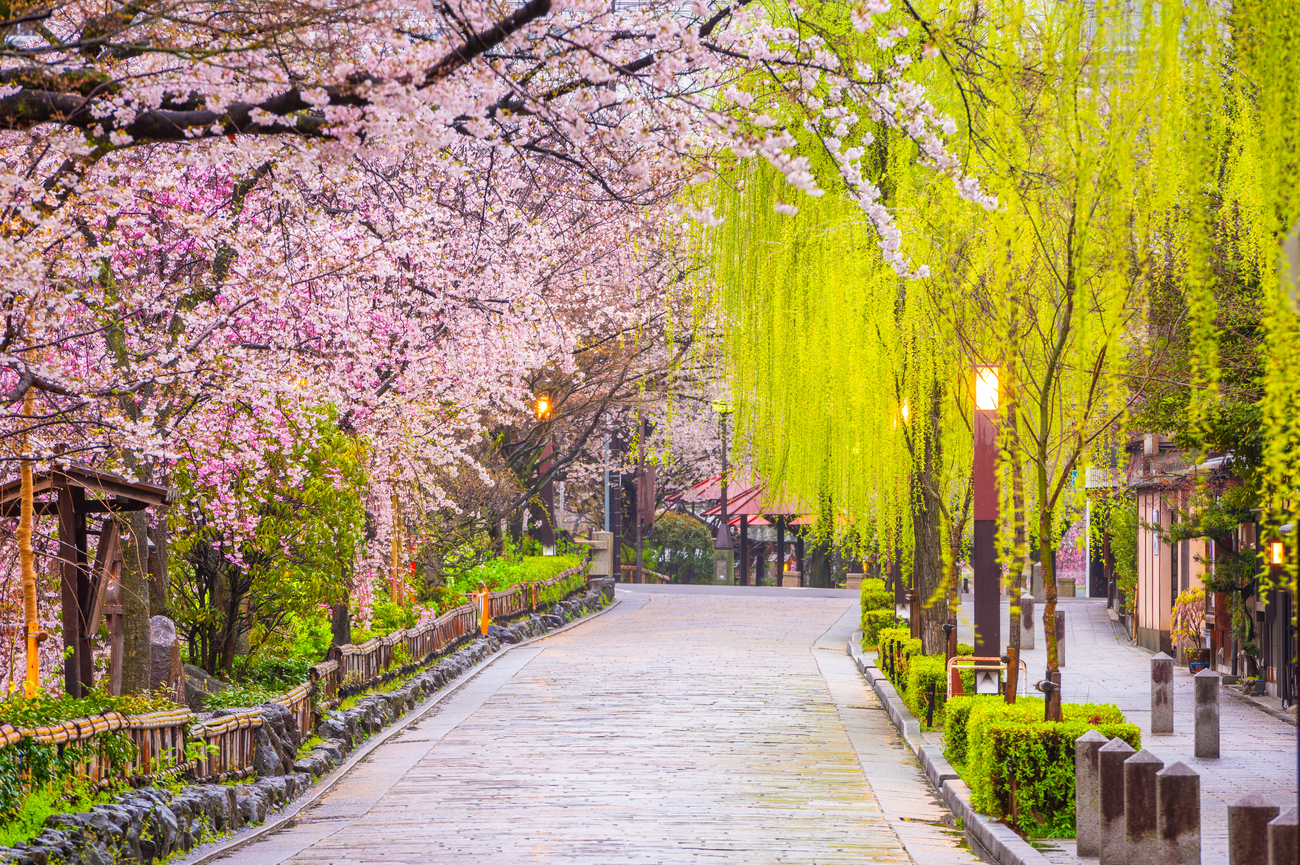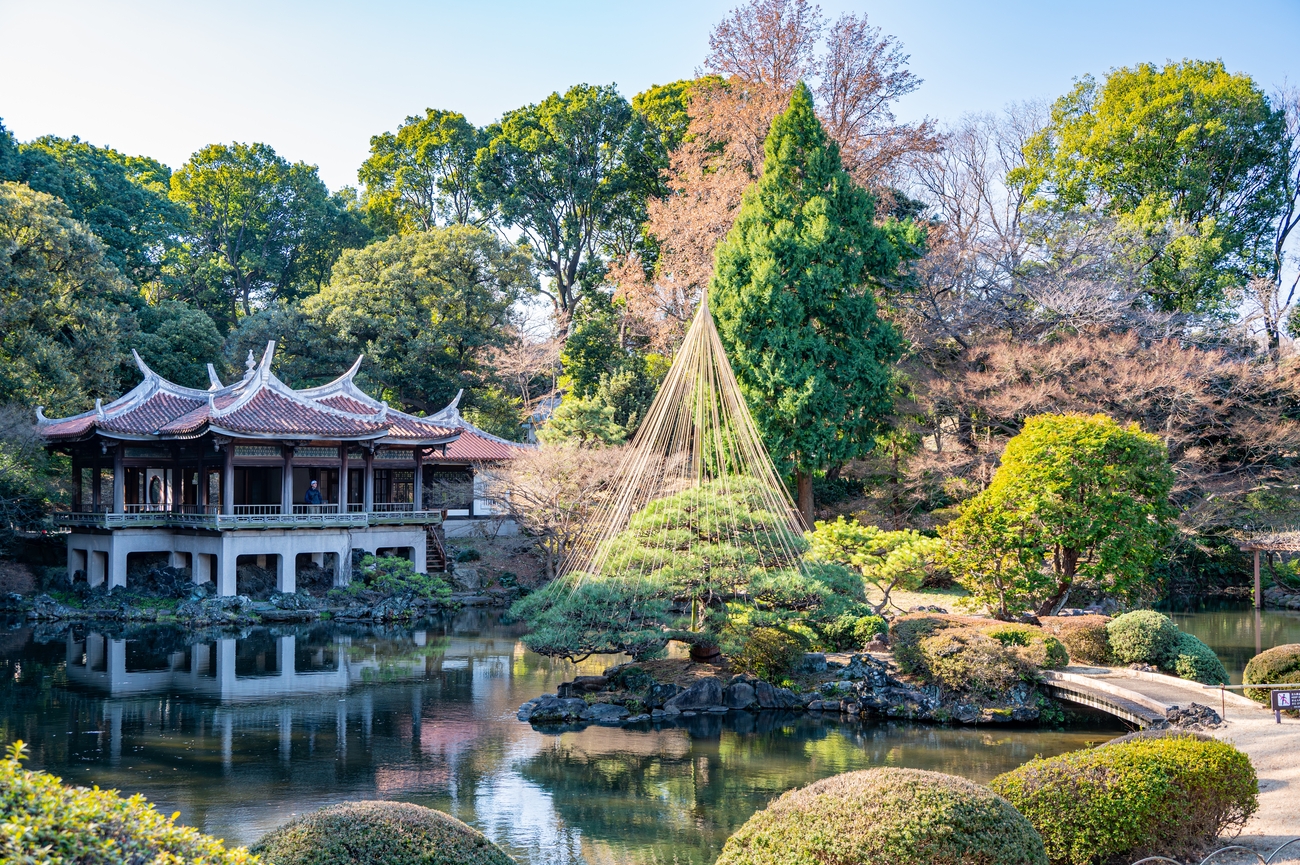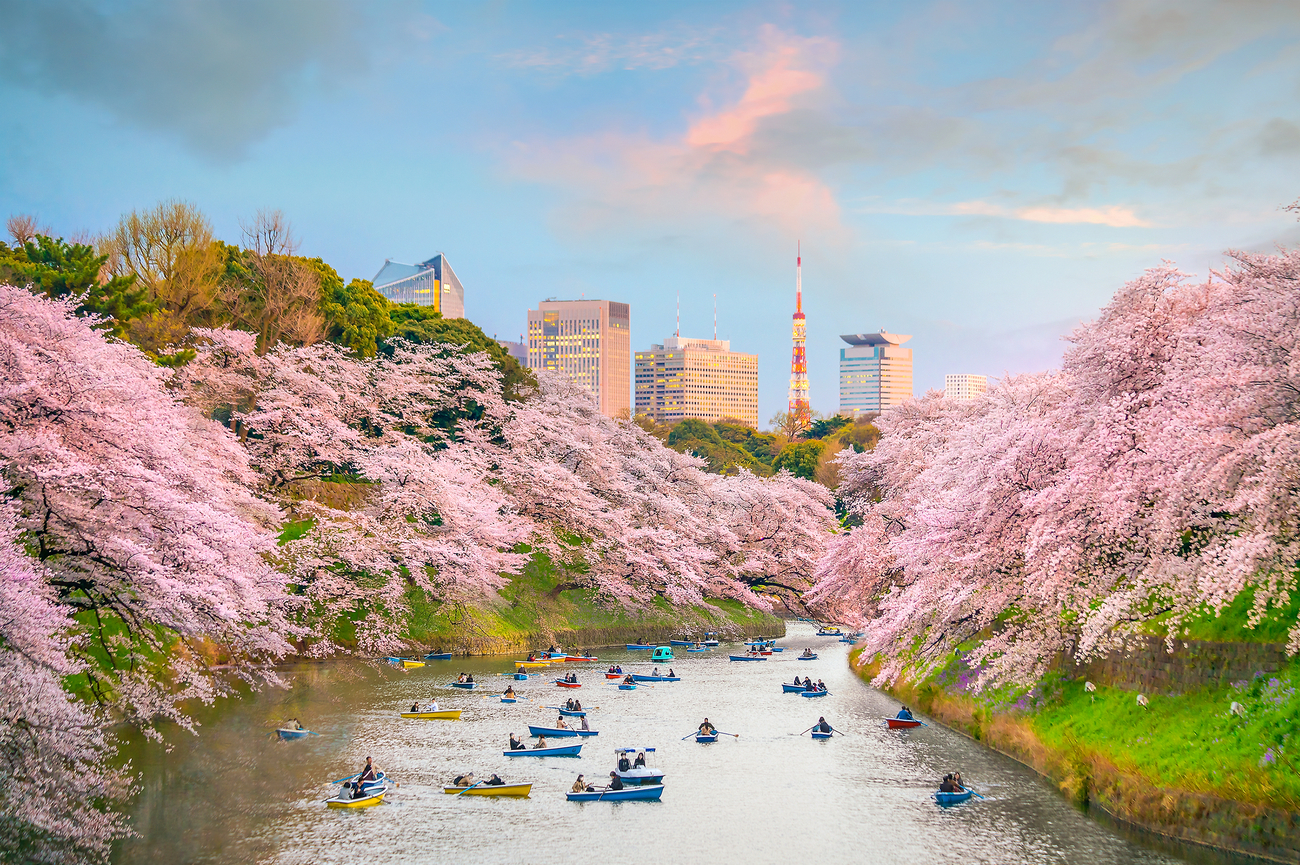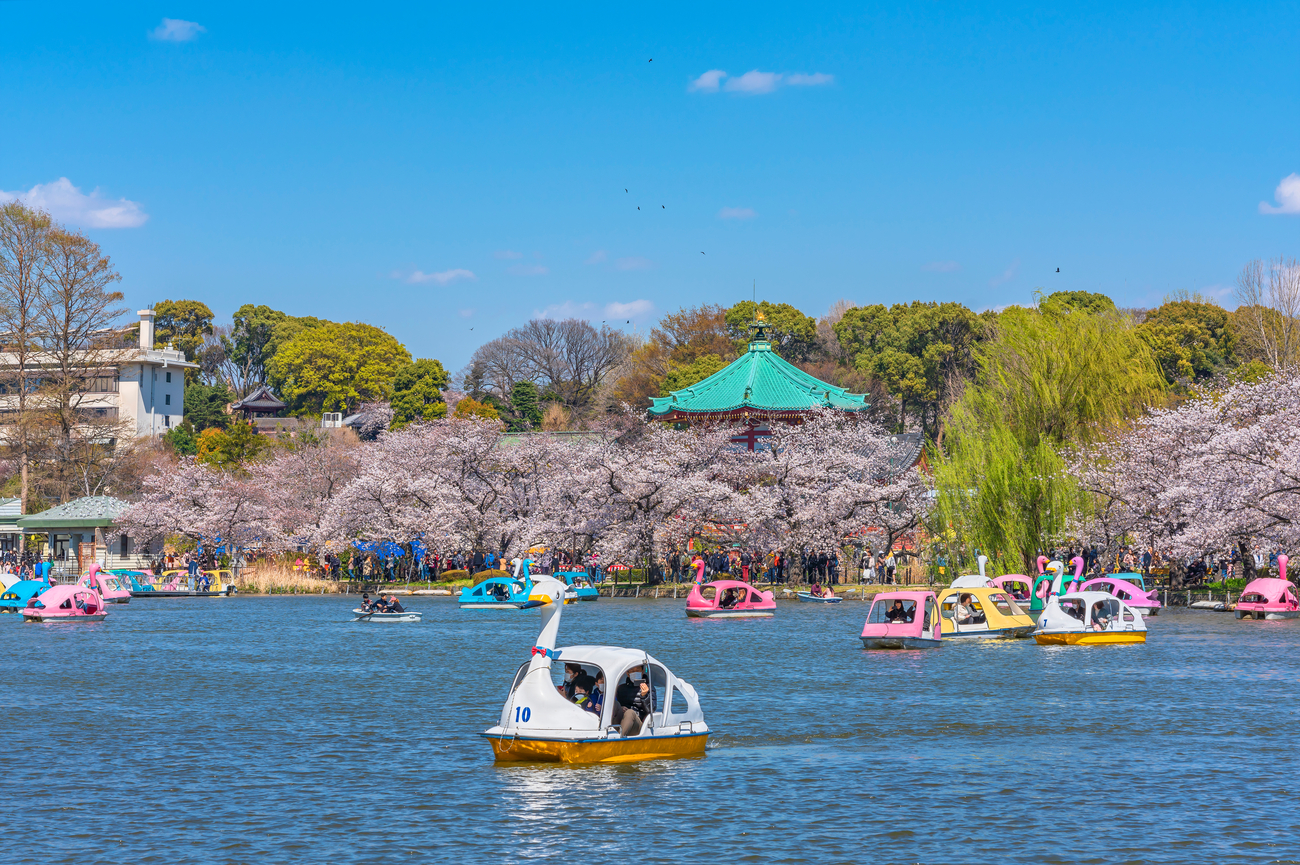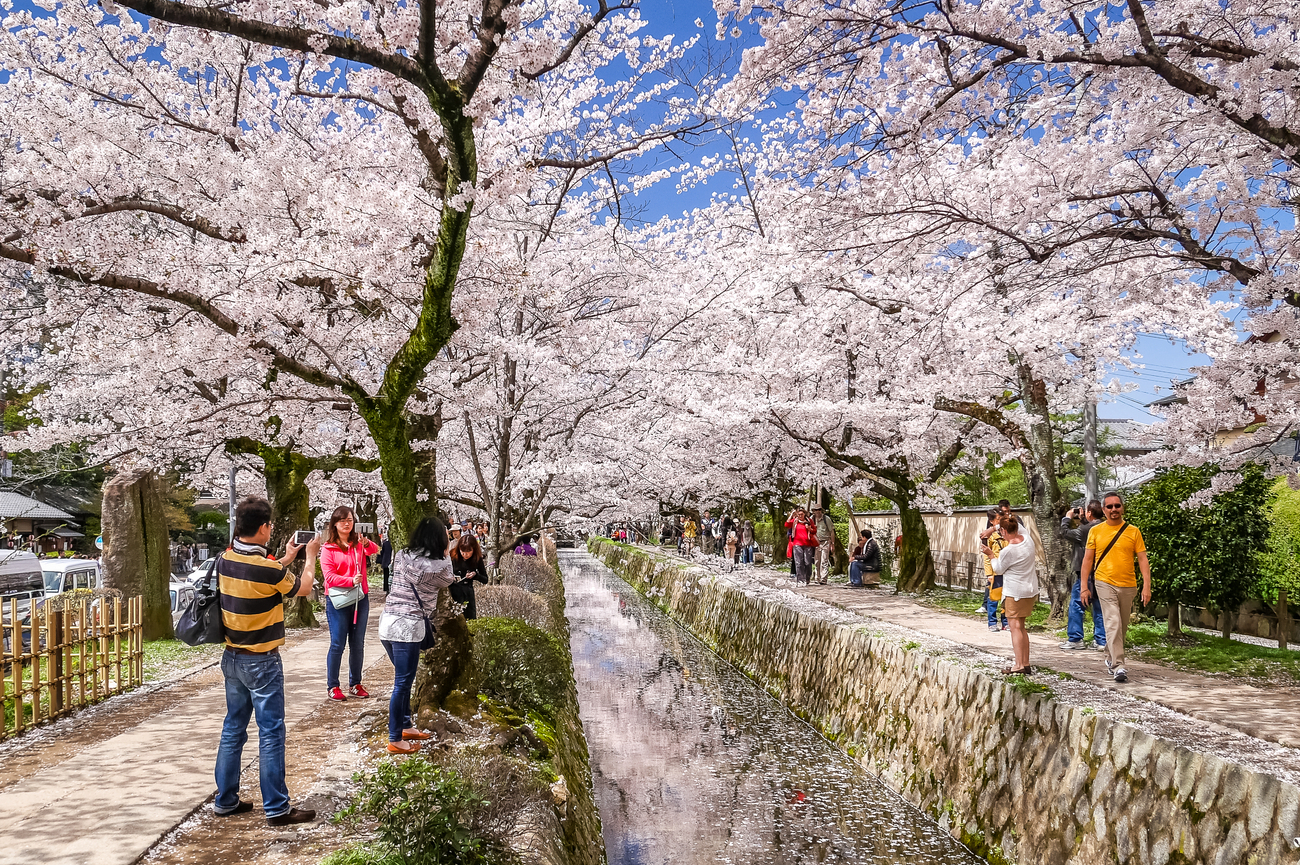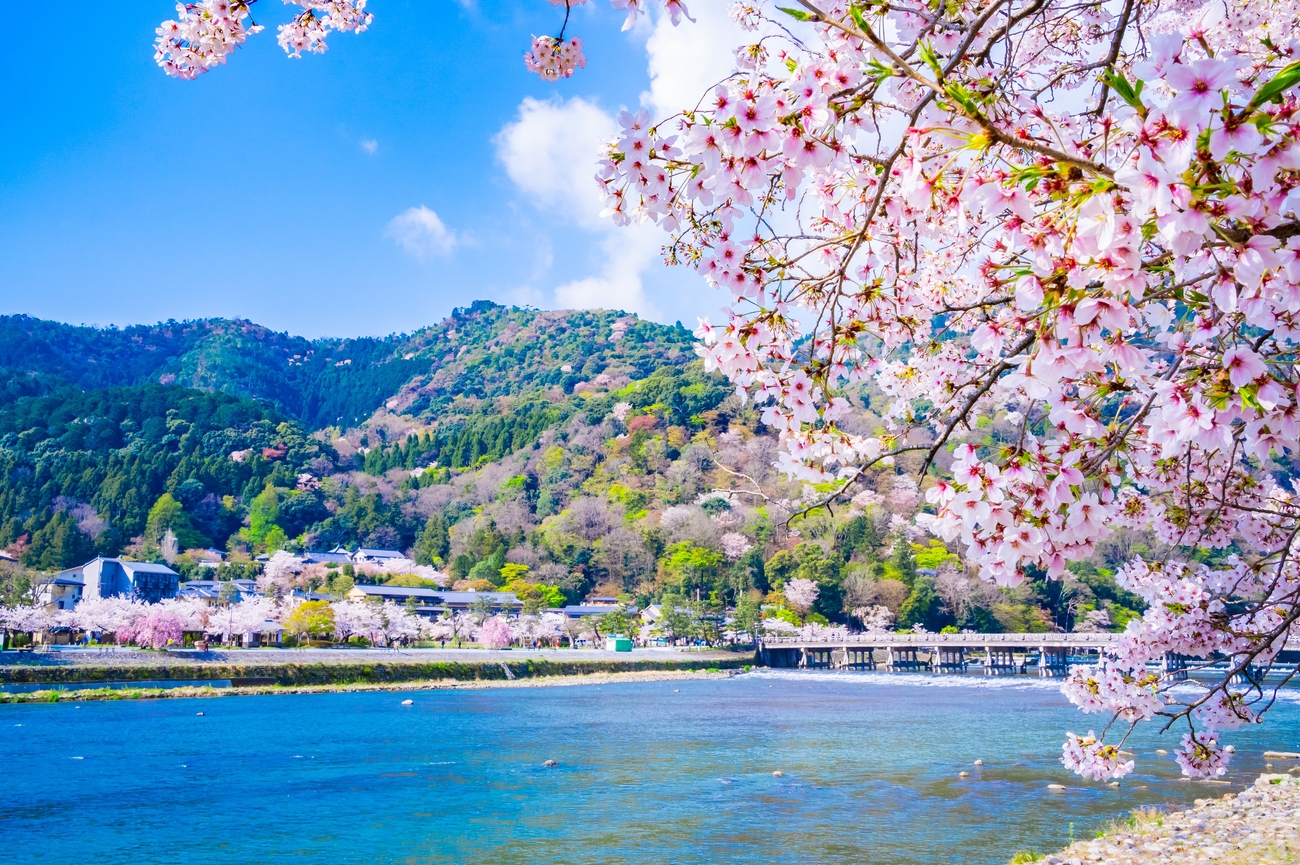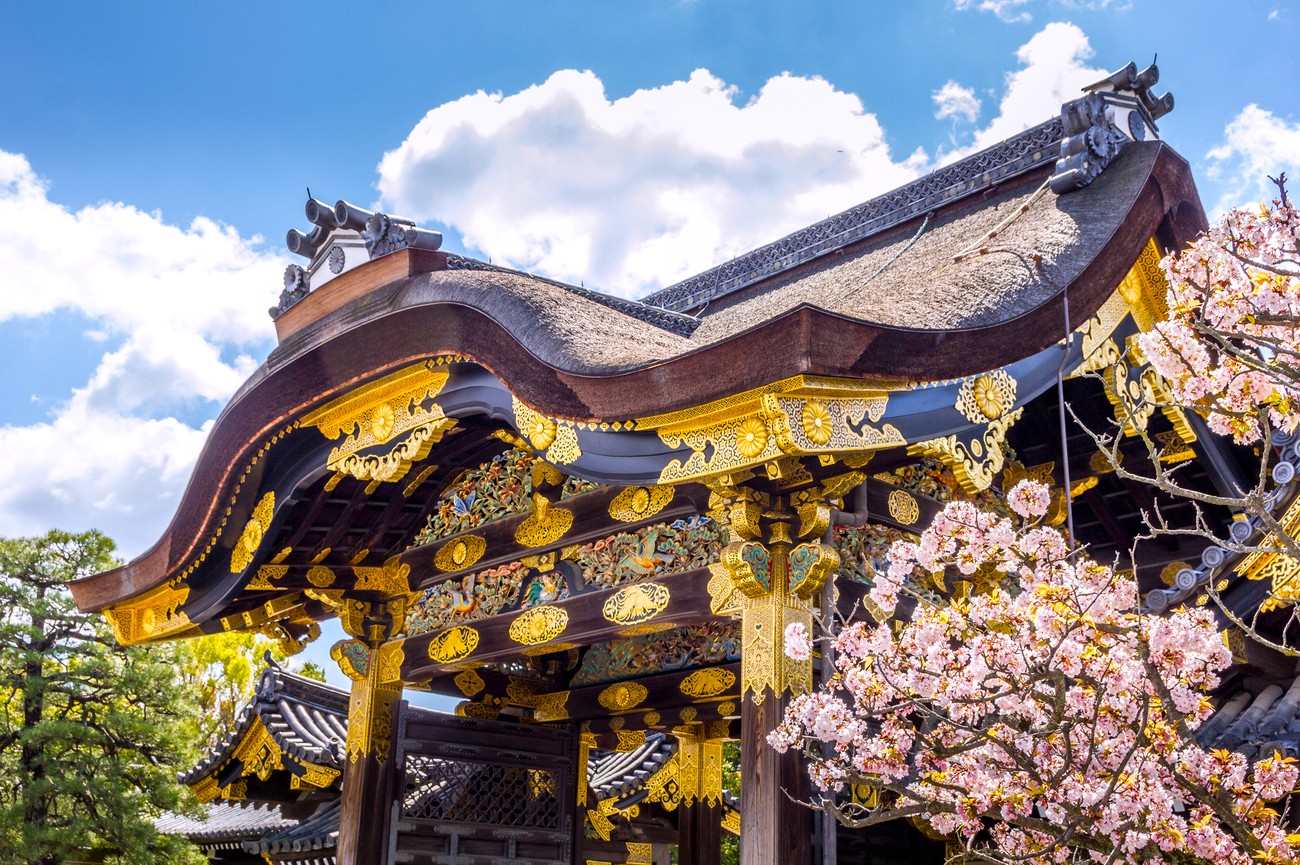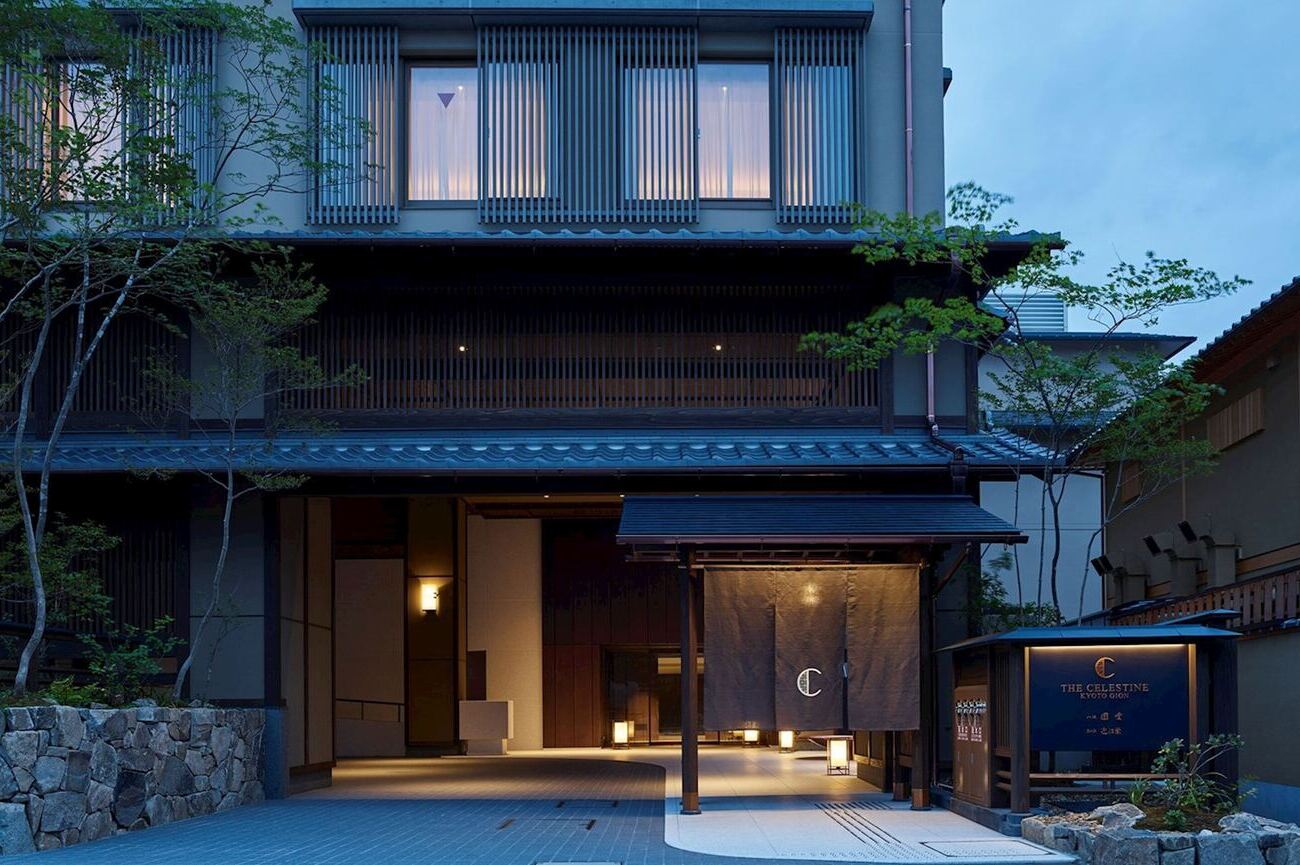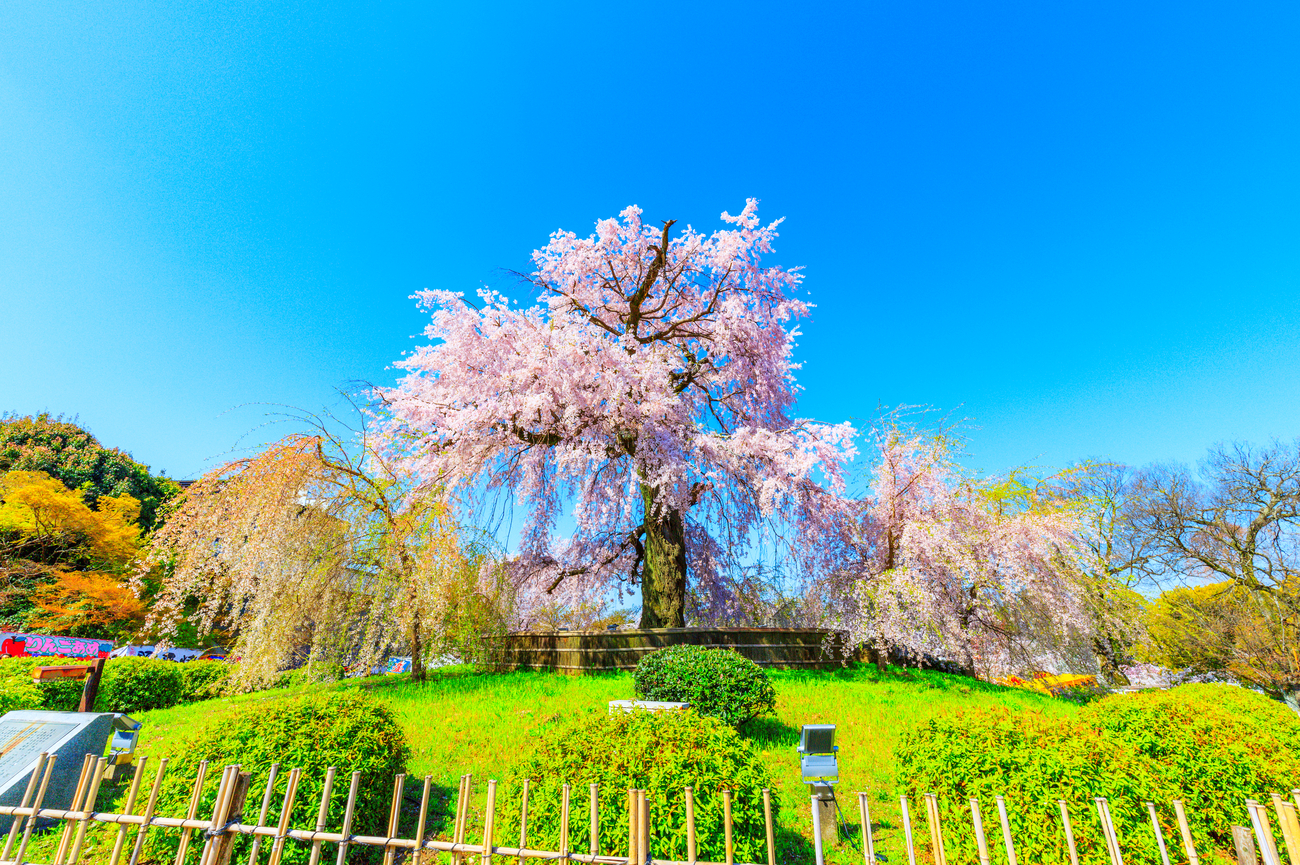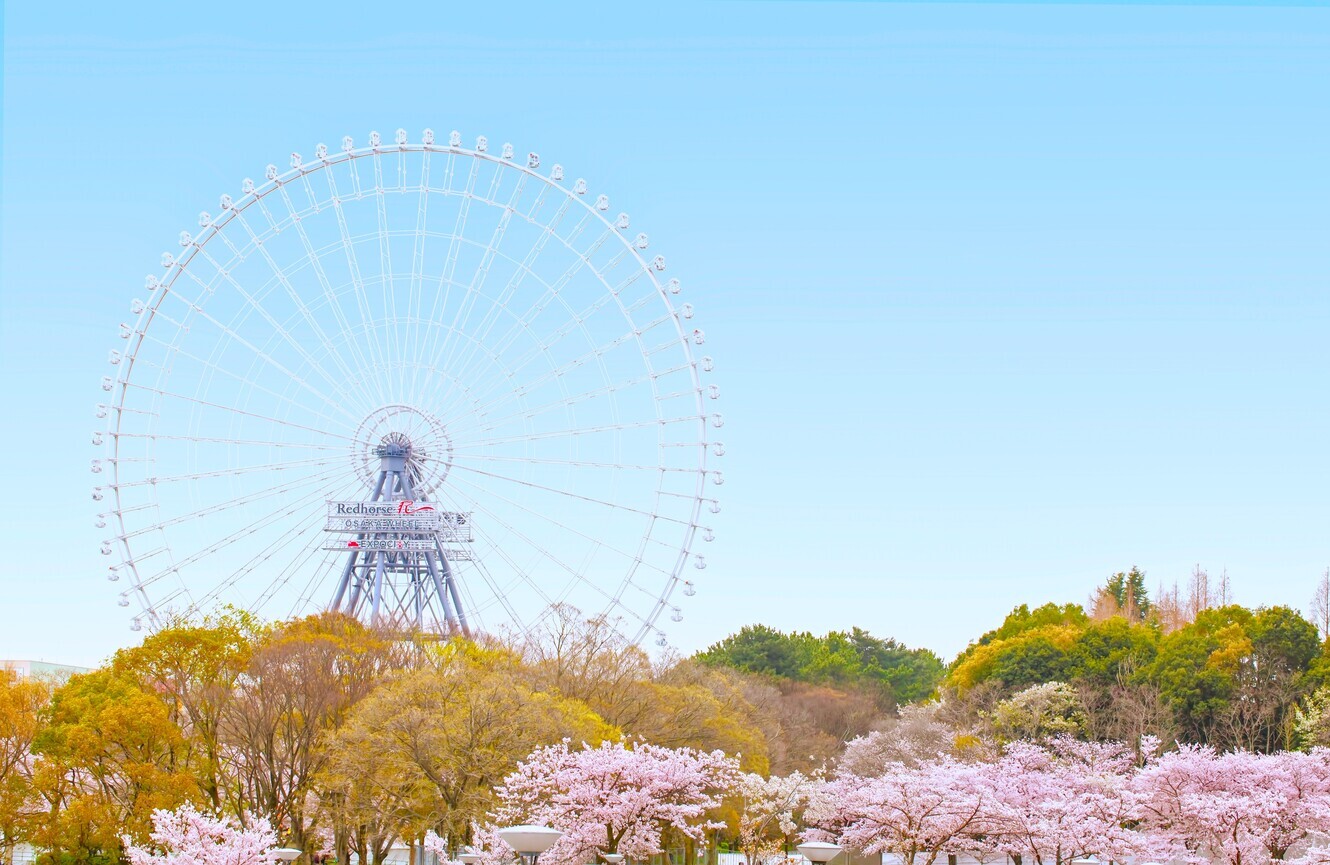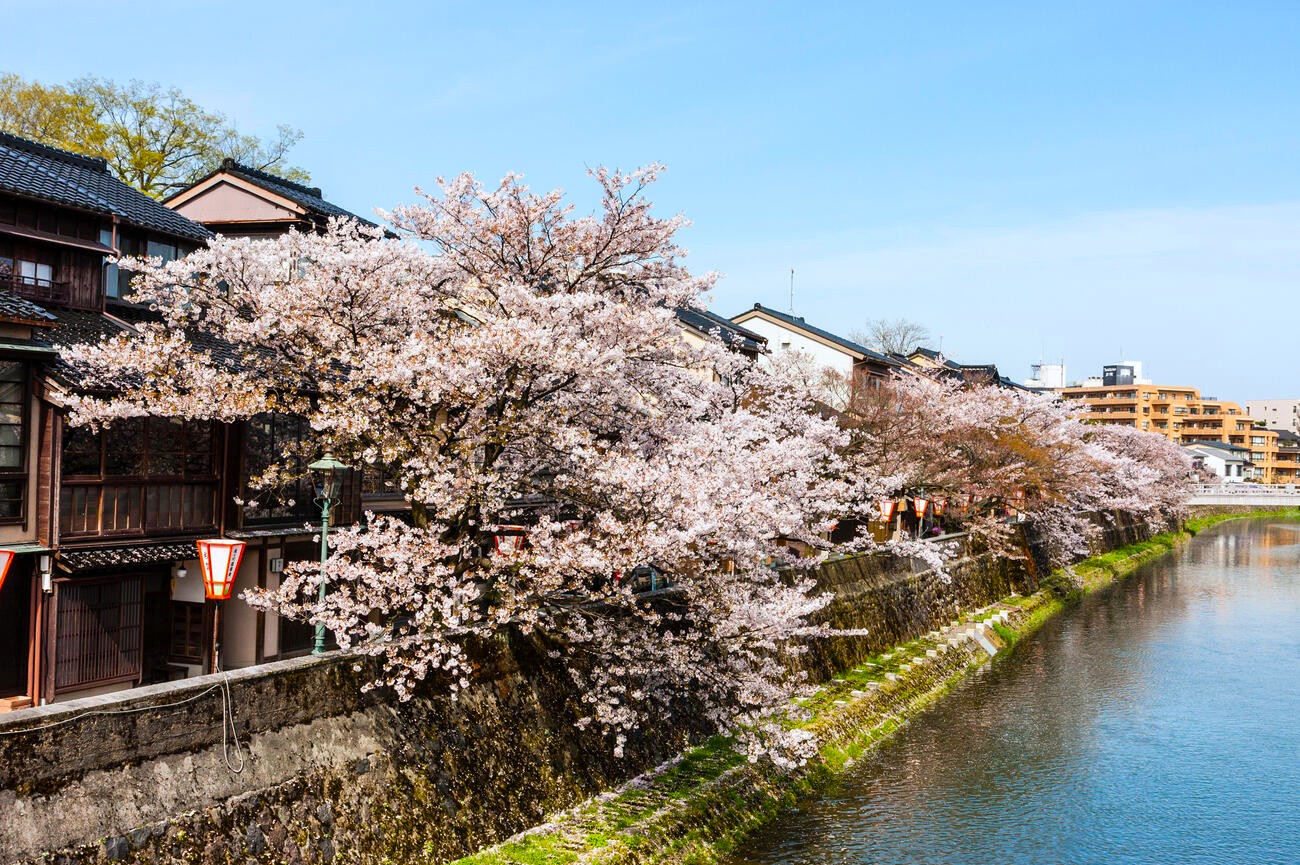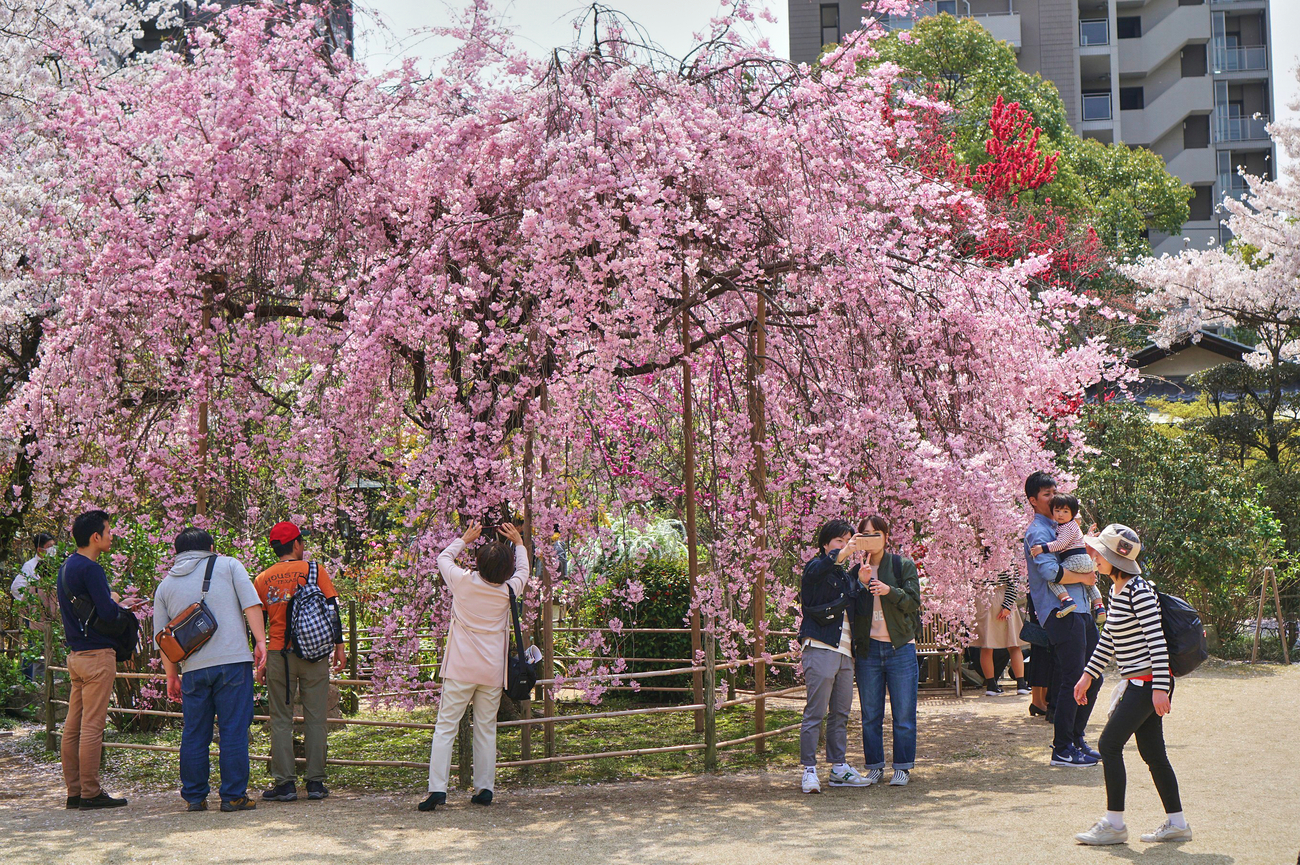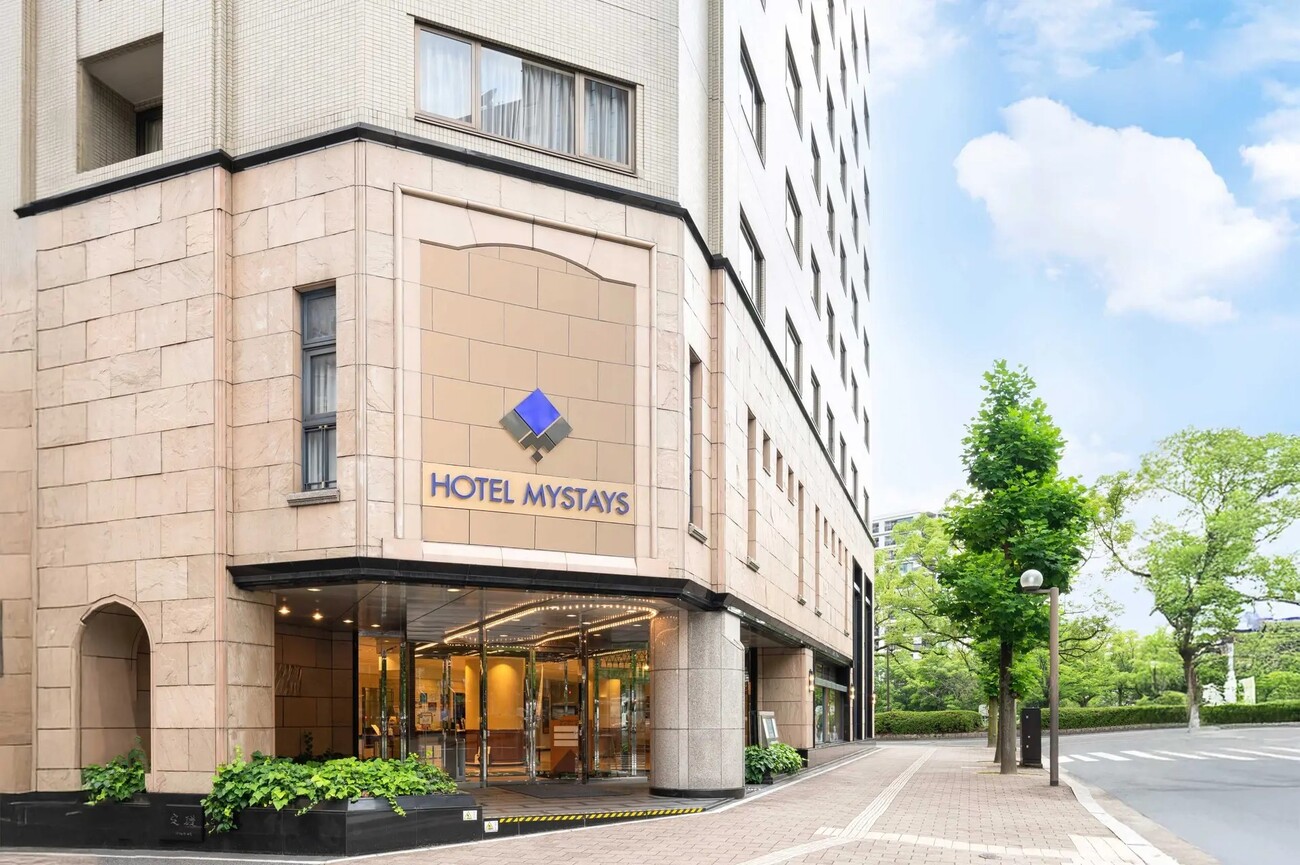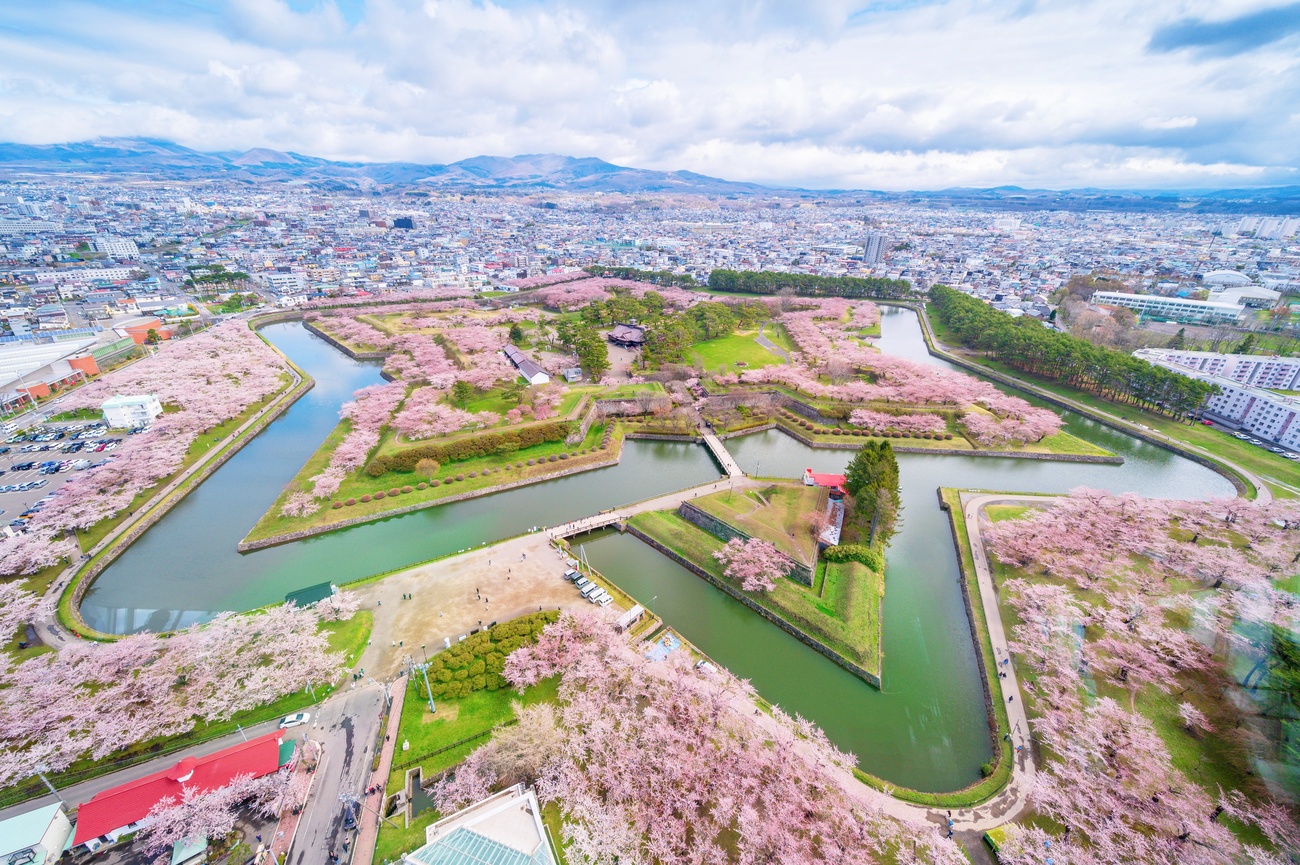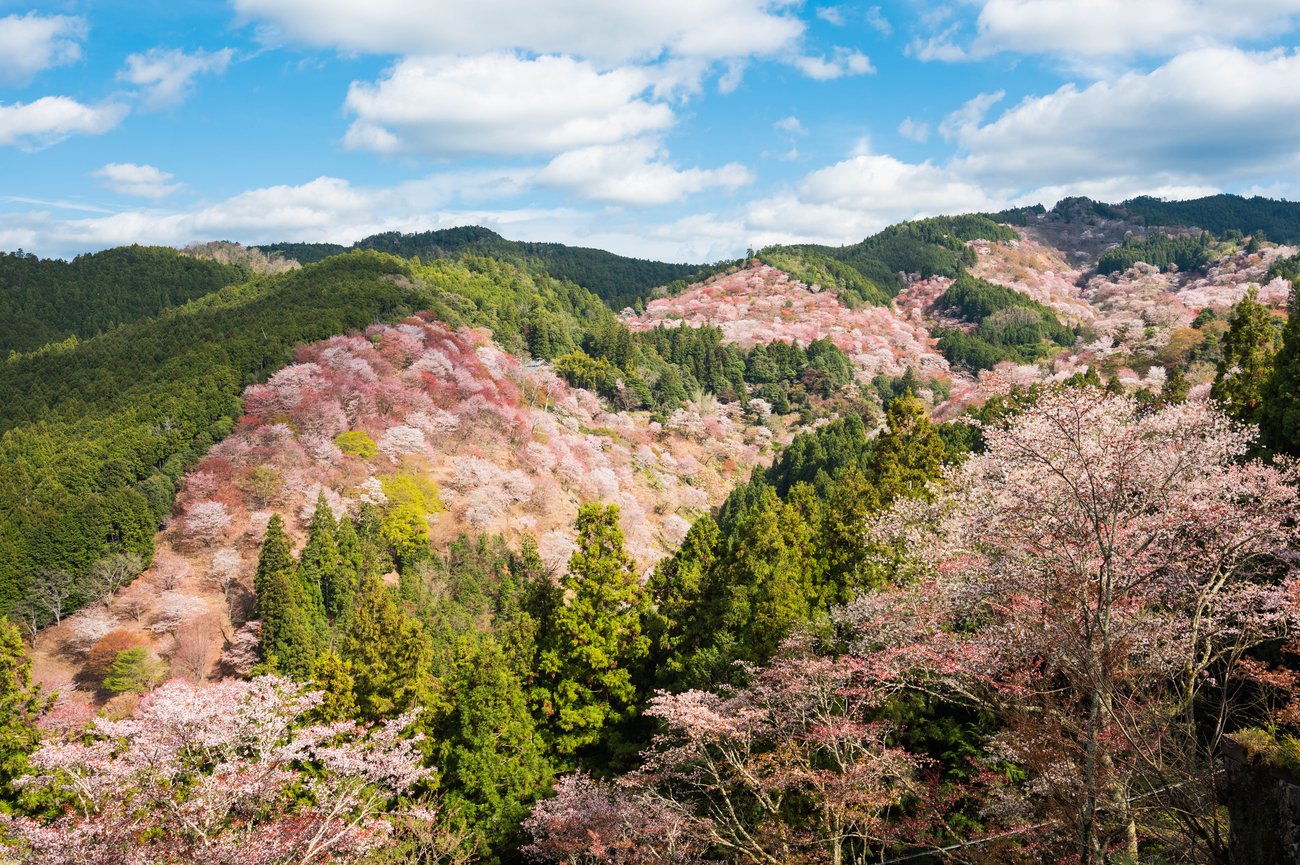Best Places to See Cherry Blossoms in Japan

Where the Petals Fall First and Last in Japan
Cherry blossom season in Japan is a timing game. It moves in a steady line from south to north. First buds open in Kyushu. Then Kansai. Then Kanto. Peak arrives later in Tohoku and Hokkaido. This shift usually stretches across March and April, which means smart planning lets you see blooms more than once if you position your route well.
People often think sakura viewing is only about famous parks. It can be, but the best places to see cherry blossoms in Japan balance scenery and culture. Some locations give you water views. Others sit beside centuries-old temples. A few sit inside cities with the most amazing food you will ever find.
This is not a checklist built from internet round-ups. These are places travelers return to because they deliver strong bloom windows and reliable logistics. They also work for different travel styles. Slow walkers. Photo-focused travelers. People who care about access to good food after a long day. That matters too.
If you want detailed bloom forecasts, regional climate notes, and tips on booking the right week, see our complete guide to Japan’s cherry blossom season. It covers weather trends, travel patterns, and hanami etiquette so you do not rely on guesswork or TikTok hype.
Use this guide to choose locations that match your pace and trip goals. Then build a route that follows the bloom. The way we did with our cherry blossom tour.
Tokyo: Modern Magic in Bloom

Tokyo works as your first stop for cherry blossom season. Bloom timing usually falls in late March, and it tends to hold steady year after year. Streets, parks, and rivers are easy to navigate. Trains connect viewing spots in minutes. Cafés and convenience stores sit near every major park, so long days outside feel smooth and manageable.
Start here to get your pacing right. You understand crowd flow. You understand how viewing etiquette works. You learn where to stand for good views without blocking footpaths. Tokyo gives structure before you branch out into quieter regions.
Top Cherry Blossom Viewing Spots in Tokyo
Shinjuku Gyoen National Garden
- A formal garden with early and mid-season varieties.
- Best early in the morning to avoid entry queues.
- No loud hanami groups here. Peaceful.
- Closest station: Shinjuku-gyoenmae (Marunouchi Line)
Meguro River (Nakameguro)
- Cherry trees lining a narrow canal. Lanterns at night.
- Movement can slow near Nakameguro Station, but crowds feel festive rather than chaotic.
- Good stop if you enjoy cafés and slow strolling.
Insider’s Tip: Begin at Ikejiri-Ohashi and walk downriver for better flow.
Chidorigafuchi + Kitanomaru Park
- Wide water views and long branches leaning over the moat.
- Boat rentals available; timing varies by day and weather.
- Kitanomaru Park next door feels calmer and works for snacks and short breaks.
- Best window: Weekdays after 10am, before tour groups peak.
Ueno Park
- Crowded and lively during peak bloom.
- Street food, picnic tarps, graduation parties, and music.
- Ideal if you want to feel seasonal community energy.
- Events and illuminations
- Bring small cash for food stalls; tap payment is not always available.
Sumida Park (Asakusa)
- More breathing room than Ueno, with clear walking paths.
- Views of Tokyo Skytree in frame for photography.
- Easy to combine with a cultural stop in Asakusa.
- Great late afternoon light along the river.
Smart Stay Zones Near Top Sakura Spots in Tokyo
- Otemachi / Marunouchi: fast subway transfers, short trip to the Imperial Palace area
- Roppongi: convenient for river walks and evening viewing locations
- Ginza: upscale hotels, quick access to Tokyo Station and transport hubs
Good picks include Aman Tokyo or The Peninsula for space, quiet, and strong transport access.
Practical Tips
- Late March to early April is the typical bloom window
- Gardens early. Rivers mid-afternoon. Illuminations after sunset
- Convenience stores nearby make grab-and-go picnics easy
- Avoid taxis during evening viewing hours; trains move faster
Kyoto: Timeless Beauty

Kyoto holds the cultural core of the cherry blossom season in Japan. Temples, rivers, and gardens here carry a long history, and the city feels slower than Tokyo by design. Peak bloom usually hits in late March through early April, sometimes lagging a few days behind Tokyo. Walking works best here. You move between districts and watch blossoms frame shrines, old wooden streets, and quiet riversides.
Plan for early starts. Kyoto fills quickly during sakura season, and popular spots benefit from getting ahead of both tour groups and day-trippers from Osaka.
Top Viewing Cherry Blossom Spots in Kyoto
Philosopher’s Path
- Stone canal walkway lined with cherry trees.
- Simple route. Easy pacing.
- Arrive early in the morning for calm movement and clean photos.
- Combine with a stop at Ginkaku-ji at the north end.
Maruyama Park
- Historic hanami hub and seasonal energy center.
- Famous weeping cherry trees lit in the evenings.
- Expect music, food stalls, and groups celebrating graduation season.
- Temporary restaurants and food stalls are often set up under the trees
- Located next to Yasaka Shrine
Locals say: Visit mid-afternoon or after dinner for atmosphere.
Kiyomizu-dera Temple
- Terrace views over the city with blooms below.
- Softest light near sunset. Crowds form fast, so pick your position early.
Note: Path into Higashiyama district offers good post-viewing strolls.
Arashiyama
- Riverside paths, bridges, and a mountain backdrop.
- Cherry trees near the river and around Tenryu-ji feel peaceful away from central streets.
- Ideal for half-day exploring.
- Avoid mid-morning tour rush; come early or late afternoon.
Nijo-jo Castle
- A strong option if you want gardens with straightforward layout and less slope than temple hills.
- Often overlooked by first-time visitors, which helps spacing.
Where to Stay in Kyoto for Sakura Season
- Gion / Higashiyama: walk-friendly to temples and evening streets
- Arashiyama: quiet river setting for slower mornings
Hoshinoya Kyoto sits on the riverside and is reached by private boat. Good choice if you want calm mornings and scenic returns after sunset crowds.
Cultural Pulse
Kyoto’s spring rhythm reflects mono no aware, a mindful awareness that beauty shifts and disappears. Visitors follow local etiquette: slow pace, small conversations, respect for temple grounds, and patience during peak viewing times.
Planning Notes
- Trains and buses fill fast; walking and taxis work better within districts
- Early entries give you space at temples and gardens
- Combine quiet mornings with busier park or river stops later
- Keep portable snacks; some sites have limited food options inside
Continue Your Journey
See how we weave Kyoto into a full route at peak bloom. Experience Kyoto’s blossoms on our Japan Cherry Blossom Tour. Curated and expertly-crafted just for you.
Osaka: Lively Parks and Riverside Picnics

Osaka feels more social when the cherry blossoms are in full bloom. People gather in parks, food stalls pop up, and river paths turn into easy picnic spots. The city usually blooms a few days after Kyoto, which makes it a natural next stop if you are following the sakura front south to north. Transit is simple here. Major viewing areas sit near central lines or within comfortable walking distance, so you can move easily between blooms and meals.
Plan casual days. Osaka rewards unstructured pacing and friendly detours for street food, coffee stops, and riverside breaks.
Top Viewing Spots in Osaka
Osaka Castle Park
- Large grounds circling the historic castle with thousands of trees.
- Open lawns, long walking paths, and clear castle viewpoints that work well at golden hour.
- Expect weekend crowds, but space helps it breathe.
- Closest station: Osakajokoen Station on the JR Loop Line.
Kema Sakuranomiya Park
- Long river trail lined with blossoms. Calm stretches away from bridges.
- Bring snacks and find a spot near the water. Great for relaxed hanami without squeezing into small lawns.
- Best light mid-morning or late afternoon along the riverside bends.
Expo ’70 Commemorative Park
- A bit outside the city center, but worth the trip for space and multiple sakura varieties.
- Families, couples, photographers. Easy to spend a half day here.
- Access via Osaka Monorail. Convenient and straightforward.
Osaka Mint Bureau (Seasonal)
- Short but iconic sakura tunnel, open only during a specific viewing week.
- Expect a queue and one-way walking flow. Still worth seeing once if timing aligns.
Smart Stay Zones Near Top Sakura Spots in Osaka
- Nakanoshima / Yodoyabashi: river walks and quick subway access
- Umeda: transport convenience if you plan day trips to Nara or Kyoto
Rooftop bars in this city shine during bloom season. Conrad Osaka offers strong skyline lines and clean river views with sakura in frame.
Insider Notes
- Bloom window usually trails Kyoto by a few days
- Great city for casual food + hanami pairing: takoyaki, karaage, matcha drinks, bakery runs
- Trains move faster than taxis during peak hours; riverside paths can replace public transit for short hops
- Expect huge crowds at more popular sites
- Evenings along the river feel safe and lively
Kanazawa: Old-World Charm

Kanazawa suits travelers who want a slower rhythm between city stops. Streets stay quieter than Kyoto, even during peak bloom, and traditional districts hold their character year-round. Early April is the usual bloom window here. Trains from Kyoto or Osaka take about 2.5 hours, which makes Kanazawa an easy midpoint before continuing north along the sakura trail.
Top Sakura Viewing Spots in Kanazawa
Kenrokuen Garden
- Classic strolling garden and one of Japan’s most respected landscape designs.
- Seasonal bridges, ponds, stone lanterns, and teahouse paths exist here in harmony.
- Cherry trees bloom near water edges and garden walkways, offering simple, grounded views rather than dramatic clusters.
- Arrive near opening to enjoy quieter loops through the interior trails.
Kanazawa Castle Park
- Large grounds next to Kenrokuen. Clean sightlines, open lawns, and strong night illumination events.
- Better for slow laps and relaxed photography than intense “must-shoot” vantage points.
- Combine both parks in one visit since they sit beside each other.
Higashi Chaya District
- Wooden teahouses and narrow streets with seasonal touches.
- Light blossoms near rivers and building lines add to the atmosphere.
- Good place to pick up gold-leaf treats on the way to the riverbank.
Saigawa Riverbank
- Simple river paths where locals walk dogs, chat, and pause for take-away snacks.
- Cherry trees line sections near bridges.
Insider’s tip: Bring coffee or taiyaki and take your time.
Where to Stay in Kanazawa for Cherry Blossom Season
- Kenrokuen & Castle Area: walk to gardens and cultural streets
- Kanazawa Station: smooth transport access, modern hotels, easy luggage transfers
Boutique ryokans like Matsumoto Ryokan offer traditional stays. Hyatt Centric Kanazawa gives a newer, design-forward option near the station.
Cultural Notes
- Gold-leaf craft is central to Kanazawa. Many cafes serve gold-leaf sweets and matcha.
- Hanami during this time feels gentle. You will see how everything is rooted in the city’s artisan history.
- Shops open later than major cities, so enjoy relaxed mornings in the gardens before exploring crafts districts.
Practical Tips
- Early April bloom period, but weather checks help fine-tune timing
- Walkable district clusters make it easy to plan by neighborhood
- Garden entry fees apply, so carry small cash or IC card
- Diners open earlier than tea houses, so plan lunch first and sweets after
Hiroshima: Reflections and Renewal

Cherry blossoms in Hiroshima feel connected to remembrance and renewal, and the city stays approachable for first-time visitors. Bloom timing usually falls in late March to early April. Transit is simple, and most major sights sit close together, so planning feels straightforward.
Many travelers pair Hiroshima with Miyajima Island for a balanced experience: history in the city, nature and shrine views across the water.
Top Sakura Viewing Spots in Hiroshima
Hiroshima Peace Memorial Park
- Paths lined with cherry trees near the A-Bomb Dome and riverside walkways.
- A grounding space to slow down, observe, and reflect.
Insider’s note: Works well in the morning before crowds increase.
Shukkeien Garden
- Compact classic garden with bridges, ponds, and teahouses.
- Blossoms frame small lake views and walking loops.
- Good stop for one to two hours, especially after museum visits.
Hijiyama Park
- Hilltop park with multiple viewing points and open lawns.
- Local vibe.
- Easy picnic stop if you want a break from central sites.
- Combined with a visit to Hiroshima City Museum of Contemporary Art nearby.
Miyajima Island (Day Trip)
- Short train and ferry ride.
- Itsukushima Shrine’s torii gate and cherry trees near the shoreline.
Tip: Late afternoon light works well. Avoid peak ferry times if possible.
Smart Stay Zones Near Top Sakura Spots in Hiroshima
- Hiroshima Station area: smooth transport with quick and easy access to Miyajima routes
- City center near Peace Park: walkable and calm
Sheraton Grand Hiroshima offers river-view suites and easy station access if you prefer seamless arrivals and departures.
Planning Notes
- Typical bloom period is late March through early April
- Museum + park pairing works well for pacing
- Book Miyajima ferry tickets early during peak travel weeks
- Bring light layers; waterfront areas can get breezy
- Be respectful of the shrine
Hokkaido: The Last Petals of Spring

Japan’s northern frontier holds with it the finale of cherry blossom season. This stretches into late April and early May. It’s a quieter, more contemplative stage of spring. The time is perfect for travelers seeking a slower, softer close to their journey.
Top
Sakura Viewing Spots in Hokkaido
Matsumae Park
- A historic castle town framed by 10,000+ cherry trees
- Strolling paths wrap around ancient fortifications
- Gentle coastal breezes carry petals across grassy courtyards.
Goryokaku Fort, Hakodate
- A star-shaped citadel seen best from its observation tower
- Blush-pink treetops ripple around geometric moats with the city’s harbor glitters in the background.
Luxury Stay & Wellness in Hokkaido
- Hakodate Yunokawa Onsen Resorts: Pair late-season hanami with open-air hot-spring baths overlooking the shoreline. Steam rises and mornings usually begin with Hokkaido seafood breakfasts.
- Boutique ryokans in Matsumae: A quieter alternative for guests who prefer stays rooted in Japan's rich heritage and chef-led kaiseki dinners.
Travel Note
- Cherry blossoms arrive weeks after Tokyo and Kyoto, which makes Hokkaido perfect for travelers who miss the early wave or want to linger deeper into spring.
- Best paired with scenic rail segments like the Hakodate Liner or Limited Express Super Hokuto, with slow, cinematic transitions between mountain passes and coastal plains.
Hidden Cherry Blossom Spots

Quiet corners for travelers who prefer gentle landscapes over crowded parks — where petals fall to riverbanks, temple roofs, and quiet mountain trails.
Mount Yoshino, Nara
Japan’s most storied cherry-covered mountain, celebrated for its layered cherry blossom slopes and ancient pilgrimage paths.
- 30,000+ cherry trees across four elevations, blooming in stages
- Shrine-lined trails; panoramic viewpoints like Hanayagura Observatory
- Small teahouses serving matcha and seasonal wagashi for casual hanami breaks
Hakone
A lakeside retreat where spring unfolds slowly, framed by volcanic peaks and steaming onsen towns.
- Sakura reflections on Lake Ashi
- Occasional Mt. Fuji views on clear days
- Lakeside cruising, ropeway vantage points, and garden walks at Gora Park
Kawazu, Izu Peninsula
A favorite for early-blooming sakura, offering richly colored blossoms weeks ahead of Kyoto and Tokyo.
- Kawazu-zakura bloom as early as mid-February
- Sakura-lined river walk with festival stalls and foot baths
Other Under-the-Radar Picks
- Hida-Furukawa (Gifu): riverside petals and white-walled storehouses; calm cousin to Takayama
- Takada Park (Niigata): renowned night viewing with lantern-lit moats
- Tsuruoka Park (Yamagata): castle moat, samurai-town energy, and soft rural spring charm
- Hirosaki Castle (Aomori): petal-filled moats and late-season blooms (add this if needed for pacing northward)
Luxury Tip
Choose stays that honor natural rhythm over spectacle:
- Gora Kadan (Hakone): traditional suites, forest-facing baths, seasonal kaiseki
- Hoshino Resorts KAI Hakone: riverside onsen rooms, slow mornings with mountain mist
- Yoshinosou Yukawaya offers a classic ryokan experience near Yoshino, with private outdoor baths overlooking the valley. With no major hotel chains in the area, it’s ideal for travellers seeking privacy and cultural immersion.
Travel Note: These spots pair well with Kyoto or Tokyo for travelers who want a softer, quieter encore after city hanami, or a place to breathe before heading north toward late-season blooms.
When and How to Plan Your Route

Cherry blossoms rise through Japan in stages. Southern cities bloom first. Northern towns end the season with soft petals still on branches long after Tokyo has moved on to new leaves. A thoughtful route follows this natural flow.
- Start in Tokyo → continue through Kyoto → pause in Kanazawa → finish in Hokkaido (where spring reaches its final chapter).
This pacing feels smooth. It gives space for slow mornings, long walks, savor meals, and spontaneous detours when locals point you toward a quiet riverside that only blooms for a week each year.
Travel options that keep the journey stress-free
- Japan Rail Pass Green Class for comfort, calm coaches, and easy luggage time
- Private hotel transfers to avoid crowds at major stations during peak bloom weekends
- Chauffeur services in Kyoto and Kanazawa for temple access and scenic paths without transit planning
- Dedicated luggage forwarding so you travel light between cities
- First-class Shinkansen cars on select routes where a full pass is not needed
Cherry blossom travel looks simple on paper, yet timing varies every year. Temperature shifts, early springs, and sudden cold snaps change the schedule. Our travel experts plan routes with bloom tracking, seasonal data, and flexible timing buffers built in. The goal is peace. Not rushing. Not guessing. Just being in the right place when petals open.
Curious why this season means so much to people in Japan? If you want a deeper sense of the tradition behind gathering under trees, explore our guide on What Is Hanami? Understanding Japan’s Cherry Blossom Tradition. It offers cultural context that makes each walk feel richer.
Following the Sakura Trail Across Japan
Spring in Japan passes quickly. Blossoms open. They rest for a short breath of days. Then they drift. Travelers who move with the season learn something gentle. Beauty is brief. Presence matters. Time slows when you stand beneath petals and watch them fall without rushing to the next moment.
Sakura trips are not box-checking tours. They are quiet mornings by rivers. Soft light on temple roofs. Tea breaks in gardens where you sit longer than planned. A memory stays long after the blossoms fade. You carry it into the rest of your life. Japan stays with you in a peaceful way.
Walk softly. Eat well. Listen more than you look. Let each day be shaped by weather, mood, and a bit of curiosity. This is how cherry blossom travel becomes personal.
Each petal carries a story. Yours finds its shape in Japan.
An Invitation to Hanami
Your trip deserves the right pacing, the right hotels, and bloom timing guided by real data. We will build a cherry blossom journey that moves through Tokyo, Kyoto, Osaka, and beyond. We carefully and intentionally design these routes with days spent in temples, river strolls, garden picnics, and hotel stays that elevate the season to its fullest potential.
Reserve early. Peak cherry blossom weeks fill fast across luxury accommodations, private guides, tours, and special access experiences. Advance planning will ensure your dates and the best rooms with the perfect view are locked and secured.
Start here: Japan Cherry Blossom Tour: Luxury Itinerary for Hanami Season
Frequently Asked Questions
-
When is the best time to see cherry blossoms in Japan?
Cherry blossoms usually open in southern Japan from March, then move north through April toward Tohoku and Hokkaido. Tokyo, Kyoto and Osaka often peak in late March to early April, while northern regions such as Hokkaido see blossoms later in April and into early May.
-
Which cities are best for a first cherry blossom trip to Japan?
For a first trip, Tokyo, Kyoto and Osaka give a strong mix of scenery, culture and easy transport. You can then add Kanazawa for artisan charm, Hiroshima and Miyajima Island for reflection and coastal views, and Hokkaido if you want a quieter finale to the season.
-
Can I see cherry blossoms more than once on a single trip?
Yes. If you follow the sakura front from south to north you can catch blossoms more than once. A common route starts in Tokyo, continues through Kyoto and Osaka, pauses in Kanazawa, then finishes in Hokkaido where the season ends later.
-
Are there quieter places to enjoy cherry blossoms away from big city crowds?
Quieter options include Kanazawa’s gardens, Hiroshima’s parks, and northern areas such as Matsumae Park or Goryokaku Fort in Hokkaido. Hidden spots like Mount Yoshino, Hakone, Kawazu, Hida-Furukawa, Takada Park and Tsuruoka Park offer softer landscapes and a calmer pace than major urban parks.
-
How many days should I plan for a cherry blossom itinerary in Japan?
Allow at least seven to ten days if you want to follow the blossoms between two or three regions at a relaxed pace. With two weeks or more you can trace a full route from Tokyo to Kyoto, Osaka and Kanazawa, then continue on to Hiroshima, Miyajima and Hokkaido for the final petals of spring.


Let us know what you love, where you want to go, and we’ll design a one-of-a-kind adventure you’ll never forget.
Get in touch
Miriam
Europe & Africa Expert

Romina
Europe & Africa Expert

Catiane
Europe & Africa Expert
Our offices:
